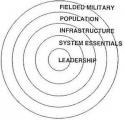Regional and International Diplomatic Efforts to Promote Iraq
Stability. The Iraqi government has received some diplomatic support, even though most of its neighbors, except Iran, resent the Shiite and Kurdish domination of the regime. There are about 50 foreign missions in Iraq, including most European and Arab countries. Jordan has appointed an ambassador and Kuwait has pledged to do so. Iran upgraded its representation to Ambassador in May 2006. Saudi Arabia, which considers the Shiite dominated government in Baghdad an affront to what it sees as rightful Sunni pre-eminence, told visiting Secretary of State Rice in August 2007 that the Kingdom will consider opening an embassy in Iraq, and it has begun steps to implement that pledge. On the other hand, some countries, such as Portugal in March 2007, have closed or reduced their embassies because of security concerns; there were attacks on diplomats from Bahrain, Egypt, Algeria, Morocco, and Russia in 2005 and 2006; Poland’s ambassador was seriously wounded in an attack in central Baghdad on October 3, 2007.
The United States has tried to build regional support for Iraq through an ongoing
“Expanded Ministerial Conference of Iraq’s Neighbors” process, consisting of Iraq’s
neighbors, the United States, all the Gulf monarchy states, Egypt, and the permanent
members of the United Nations Security Council). The first meeting was in Baghdad
on March 10, 2007. Iran and Syria attended, as did the United States. A follow-on
meeting in Egypt was held May 3 and 4, 2007, in concert with additional pledges of
aid for Iraq under an “International Compact for Iraq”, and agreement to establish
regional working groups on Iraq’s security, fuel supplies, and Iraqi refugees. Those
groups have each had several meetings. The latest ministerial meeting was held in
Istanbul on November 2, 2007, but that meeting was reportedly dominated by the
crisis between Turkey and Iraq over safe haven for the Turkish Kurdish opposition
PKK (Kurdistan Workers Party), discussed further below. The November 2007
meeting did agree to create an institutional support mechanism for the process,
possibly run by UNAMI. The next regional meeting will be held in Kuwait. Bilateral
U.S.-Iran meetings on Iraq are discussed below.
Human Rights and Rule of Law. The State Department’s report on human
rights for 2007, released March 11, 2008, much as the previous year’s report, appears
to blame much of the human suffering in Iraq on the overall security environment,
the widescale presence of militias, partisans in the government and gangs, and not on
the Iraqi government writ large. It says that Iraq’s has the legal framework “for the
free exercise of human rights.” U.S. officials say Iraqis are freer than at any time in
the past 30 years, with a free press and the ability to organize politically. A State
Department report to Congress details how the FY2004 supplemental appropriation
). Unfortunately, our Army has far more in common with Microsoft and Delta than it does with Apple and Southwest.












 "A Sherman can give you a very nice... edge."- Oddball,
"A Sherman can give you a very nice... edge."- Oddball, 




Bookmarks